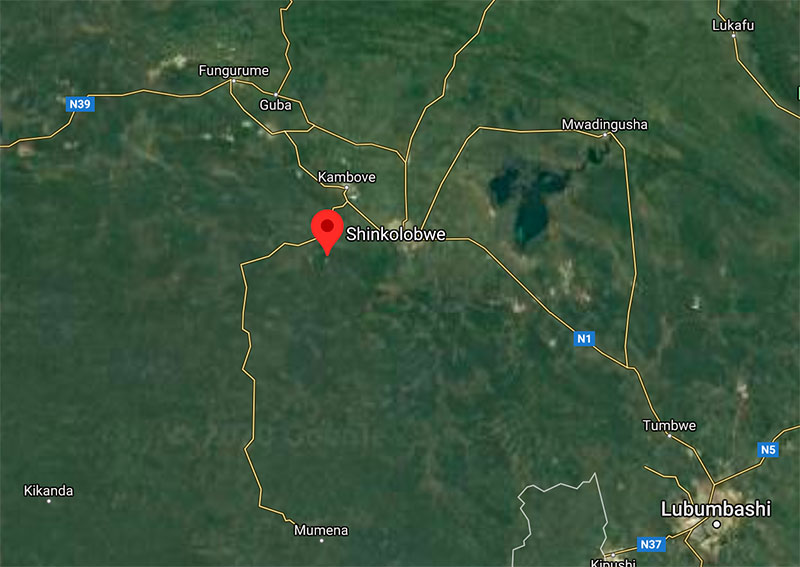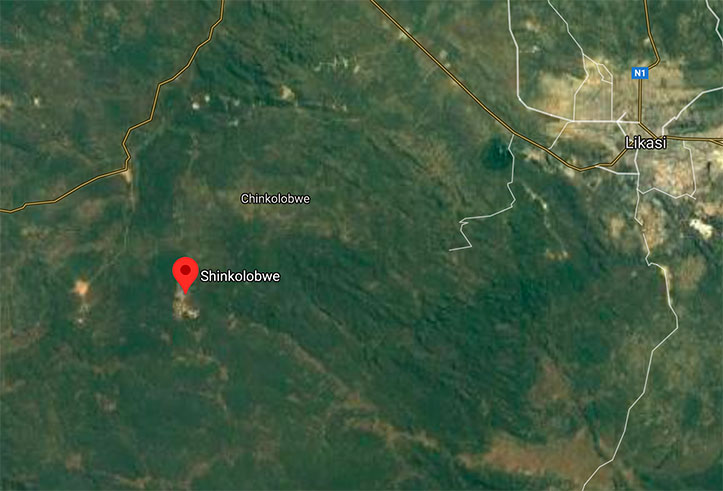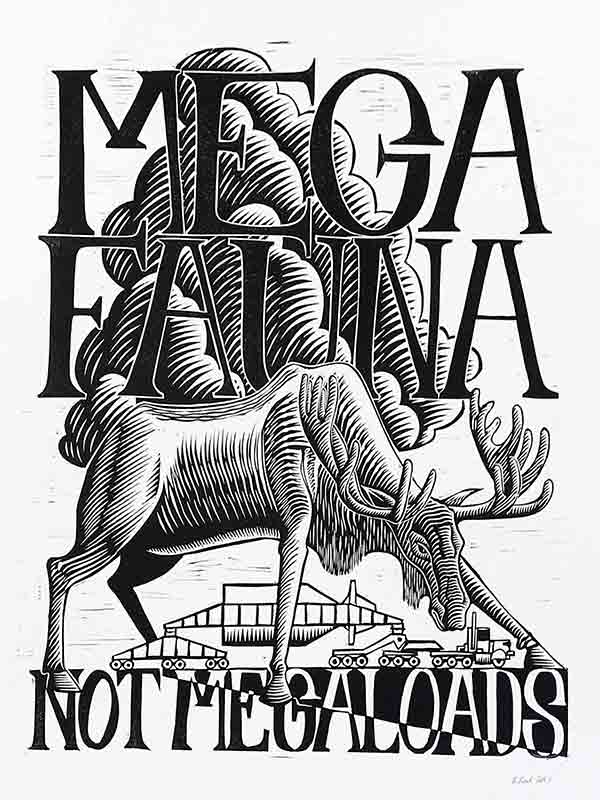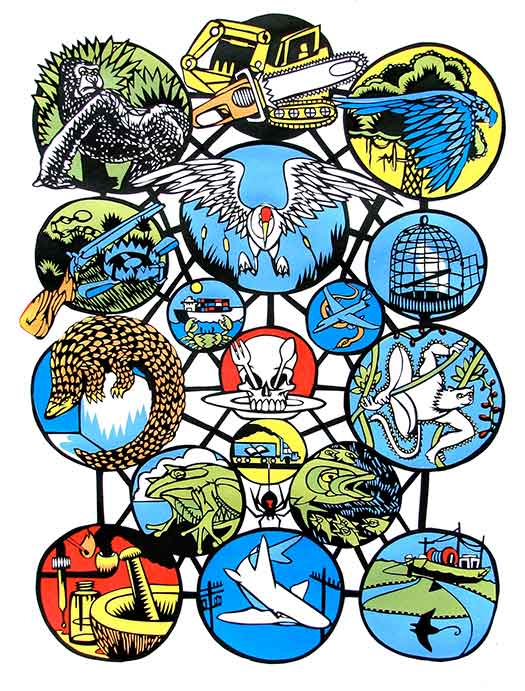I’ve been researching a sprawling project about the Congolese mine that produced the Uranium for the Manhattan project for several years now (read previous blog posts here and here). With a general uncertainty about what I’m eventually going to do with everything that I’ve learned, the research has become its own reward. It has taken me to unfamiliar places, and suggested I read about subjects that I might not have chosen to. The pursuit of information in this context has caused new things and new ideas to become fields of focus, and made other things that I used to find crucially important recede slightly into the fog. The constant, however, is the rocks.
As I have constantly reiterated to anyone in earshot during this process, the Shinkolobwe uranium mine in the southeast of Katanga province in what is now the Democratic Republic of Congo was the source of the vast majority of the uranium used in the rapid development of nuclear weapons by the United States during the Second World War. It was the most highly concentrated mass of uranium ore ever located- reaching levels of up to 65% uranium where most of the similar ores found elsewhere in the world seldom topped 1%. The immense power and concentration of those rocks meant harsh consequences for the Congolese mineworkers who dug them- as they were doing so mostly with hand tools and loading them by hand into open carts. One of my lines of investigation has been the pursuit of the voices of those mineworkers, who’ve remained almost entirely outside of the history of the war and of the project to develop atomic weapons. In recent weeks I seem to have found an organization that represents expatriate communities of Shinkolobwe’s miners and their descendants who now live in South Africa. Congolese Civil Society in South Africa puts on the Missing Link conference, a semi-annual gathering aiming to bring the world’s attention to the sacrifices these people made for a project that left them thoroughly behind. Currently I’m trying to put them in touch with organizations in New Mexico that are planning the 75th anniversary commemorations of the Trinity test and the bombing of Japan, with a view towards hosting a webinar or digital forum of some sort where voices from the indigenous communities of New Mexico, the Congolese mineworkers, and descendants of those affected by the bombs dropped on Hiroshima and Nagasaki can present and hear their stories. We’ll see how that goes.
I have a plan now for at least one thing that I’m going to do with the research that I’ve been doing- and that something is a map. I’ve determined that it’s possible to trace almost the exact route that the ore from Shinkolobwe took as it emerged from the earth and was incorporated into the massive industrial undertaking that the United States developed in order to build the bomb. This started to seem like a good idea after I realized that the presence of these precise stones, the spectacular ore quarried from a region of sparse forest and scrub within a larger zone of intense industrial mining activity, was easily visible in the historical record. The rocks keep showing up.

They appear in barrels in a warehouse in Staten Island where the Belgian mining conglomerate Union Minière had stored all the ore that it hurriedly evacuated from Congo after Belgium was overrun by Germany in the early days of the War. They appear in Tonawanda, New York, where the Staten Island stockpile was shipped for initial processing at the Linde Air Products plant, a facility that had experience turning uranium into ceramics glazes, and which had retooled to suit the sudden influx of the high-quality Congo ore. The rocks appeared again in St. Louis at the Mallinckrodt plant, the next stage of refinement where the material from New York, sometimes still in barrels labeled Product of the Belgian Congo, was transformed in a messy and hurried manner into pure uranium metal slugs and other compounds- such as the yellow crystals of Uranyl nitrate hexaflouride that project scientists required in order to improve their techniques of extracting the new metal known as plutonium. The rocks appear again in the uranium lozenges being fed into the massive B and D reactors at the Hanford nuclear complex in eastern Washington, just east of where I live.
In late 1944, production of the raw materials for the atomic weapons program was taking place simultaneously at Hanford and at the enormous Oak Ridge facility near Knoxville in Tennessee, with much of the actual weapons research now located at the Los Alamos laboratory in northern New Mexico. While Manhattan Project scientists were scrambling to determine exactly how they were going to assemble the critical mass of fissile material that a functional bomb required, new elements of the US military establishment were hard at work in other parts of the world attempting to ensure that Germany’s Nazi regime would be unable to construct a bomb. The Germans had acquired about 1200 tons of Shinkolobwe ore from Union Minière when they invaded Belgium. An American unit named ALSOS under an officer called Boris Pash had traced some of that ore to a warehouse in Toulouse, and proceeded to track the Nazi nuclear program and its scientists across western Europe as the Allied forces closed in on Berlin. They used documents they found in each abandoned lab to pursue the location of the next, until they found the remainder of the Congolese ore at a factory in Stassfurt. It had been stored in the barrels it arrived in, each still bearing the stenciled mark of its origin in the Congo, and the Americans arranged for it to be packaged and shipped off across the Atlantic to the Oak Ridge facility, where the ore they had recently captured in Toulouse was being refined and processed to form the fuel for the bomb known as “Little Boy”.

The rocks keep showing up. After their transformation into increasingly exotic and rarefied states and passing through the calutrons and piles of the Manhattan project to produce Uranium 235 and Plutonium, the Shinkolobwe rocks eventually detonated over Japan. Their legacy, however, is larger that the simple technical achievement of the construction of atomic weapons and their successors, the hydrogen and neutron bombs. The project that utilized them as the raw material for that effort became in essence a shadow government of the United States, and its collusion with the nascent US intelligence services struck a new course for the rest of the Twentieth Century, as conflict with the Soviet Union gave this new quasi-state structure the justification it needed to do basically whatever it wanted. For much of the Manhattan Project’s existence, it was hidden from almost all forms of civilian oversight, and the secrecy and autonomy that it enjoyed came to define it. That uncivil authority claimed a cool and shadowy sovereignty over the country that had been so crucial to its development: the Congo remained a vassal state even through its independence in 1960, and in the chaotic aftermath, where US and Belgian authorities colluded to engineer the assassination of independence leader Lumumba in January of the following year. Associated political elements have been connected to the untimely death of the secretary general of the UN, Dag Hammarskjold, whose aircraft was shot down over Katanga in 1961 in circumstances that have recently come under renewed international scrutiny.
The rocks keep showing up. Columbia Riverkeeper, an organization that works to preserve the Columbia river and its drainages in Washington and Oregon states, has been organizing to bring people’s attention to the ongoing risk of contamination from Hanford’s aging infrastructure. The ancient tanks that contain the residue of Hanford’s plutonium production sit unstable beneath the sagebrush of that high and windswept plateau, waiting to crack like dark eggs and release their effluent into the river that runs near my house, which I can almost see out my window as I write this. The rocks keep showing up in the testimony of the Congolese mineworkers whose strange growths and cancers have never been publicized or compensated. Those rocks brought us the future we will all live in from now on.









